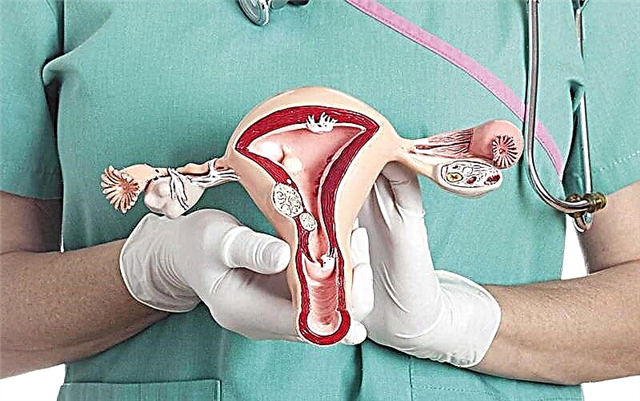Taking a blood test from a vein is not the most pleasant procedure, even for adults, not to mention babies. After all, they are so small, and parents always feel sorry for their child. But the devil is not so terrible as he is painted. If you familiarize yourself with the peculiarities of blood sampling in children in advance, you can avoid unpleasant consequences.
In what cases is blood drawn from children?
There are many situations in which blood sampling from a vein in infants is required.

This could be:
- prematurity;
- jaundice in a newborn;
- anemia (a decrease in the level of hemoglobin in the blood);
- determination of the blood group and Rh factor in a newborn (if the mother of the child has 1 blood group or negative Rh factor);
- forthcoming surgical treatment;
- transfusion of blood components;
- infectious diseases.
Venous blood reflects the work of many internal organs, which allows the doctor, based on the results of the study, to make the correct diagnosis and prescribe the appropriate treatment or completely cancel the drug.
Features of the structure of blood vessels in infants
The peculiarities are that the subcutaneous fat is loose and equipped with a dense network of small blood vessels, which is why the larger veins of the limbs are poorly visible.
The wall of veins (even large ones) in infants is thinner and less elastic than in an adult, therefore, the vessels are more fragile. Blood pressure in the vessels of infants is low, blood flows more slowly, which takes longer to draw blood from a vein. It so happens that it is impossible to take blood from the cubital vein. In this case, they resort to other available vessels: veins of the hand, feet, even the veins of the cranial vault, from where blood is taken only in extreme situations.
Blood sampling methods
There are two ways to donate blood:
- blood from a vein in an infant (venous blood);
- blood from a finger (capillary blood).
Often parents ask the question whether it is possible to replace blood sampling from a vein with a finger fence. As a rule, it is impossible, since capillary and venous blood differ in composition. And for a number of studies, a larger amount of blood, up to 5 ml, is required, which does not allow taking a fingerprint test. And do not forget about the fact that donating blood from a vein is not as painful as donating blood from a finger. Even on the example of an adult: when taking blood from a vein, the pain is usually less, but a pricked finger can still hurt for a long time.
How to make the procedure less painful and get a positive result the first time?
Now there are modern devices (venovisors) that help facilitate access to the vein.

The principle of operation is that by illuminating the limb, they project the course of the vessels onto the surface of the skin, which greatly facilitates the entry into the vein. Such devices are used in private clinics.
You can make the procedure less painful if you use special needles ("butterflies"), lancets or scarifiers (for taking from the finger). The scarifier (lancet) guarantees the optimal distance between the finger and the device at the time of puncture and uniform pressure of the needle on the skin, which minimizes painful sensations.
The peculiarity of this device allows you to control the puncture depth and obtain the required amount of blood.
What needles and syringes do babies use?
Today, syringes with a vacuum system and butterfly needles are widely used.
The volume of a syringe tube depends on the volume of blood for a particular type of study. Syringes have different color markings and different reagents inside the tube. The system is hermetically sealed, which does not allow blood to come into contact with the environment and, accordingly, increases the accuracy of the analysis. Part of the needle in such a system is treated with silicone, this allows it to enter the vein more smoothly, and reduces pain.
Butterfly needles got this name because they have an external resemblance to this insect. They are often used in babies. The needle itself is very thin and does not move inside the vein, does not damage the vessel wall, even if the child is restless during the procedure. These needles are often used in intensive care units.
To feed or not feed the baby before the test?
According to the rules, blood is donated on an empty stomach, but in infants it is almost impossible to carry out this action. Therefore, of course, the child needs to be fed, preferably 2 hours before the procedure, so that he is well fed and calm. And the feeding itself will ensure the ease of the procedure, since blood circulation after eating increases, the pressure in the vessels increases. This means that it will be easier for the medical staff to take the analysis.
When it comes to donating blood from a finger (heel), it is worth mentioning that the child's limbs should be warm. With cold extremities, the vessels of the skin spasm, which, in turn, impedes blood flow.
Note to parents - rub the brushes, the baby's fingers will not hurt.
How do parents prepare?
- It is pointless to panic yourself before donating blood. You will only worsen the situation with your behavior.
- If a child is 2 months or more, he is already able to look at everything bright, you can take a toy with you for distraction, as well as a mixture in a bottle (if artificial feeding) or expressed breast milk (if it is not possible to breastfeed).
- To calm your child down, you can offer him food after analysis.
I would like to separately note that the emotional mood of the parents during the blood collection procedure is incredibly important for the baby. Parents are often very worried, and their experience and fear are transmitted to the child. No one will get any better from this.
Going to the procedure if such an examination is necessary, remember and constantly remind yourself that the child will be worse if he is left without examination. We often have to go through some unpleasant moments in order to get better later. Taking a baby's blood from a vein is just such an “evil for good”.
In conclusion, I would like to say that donating blood, whether from a vein or from a finger, is a standard procedure. Everyone who decides to give birth to a child passes through it. You need to calm down and not wind yourself up over trifles.
Article rating:



